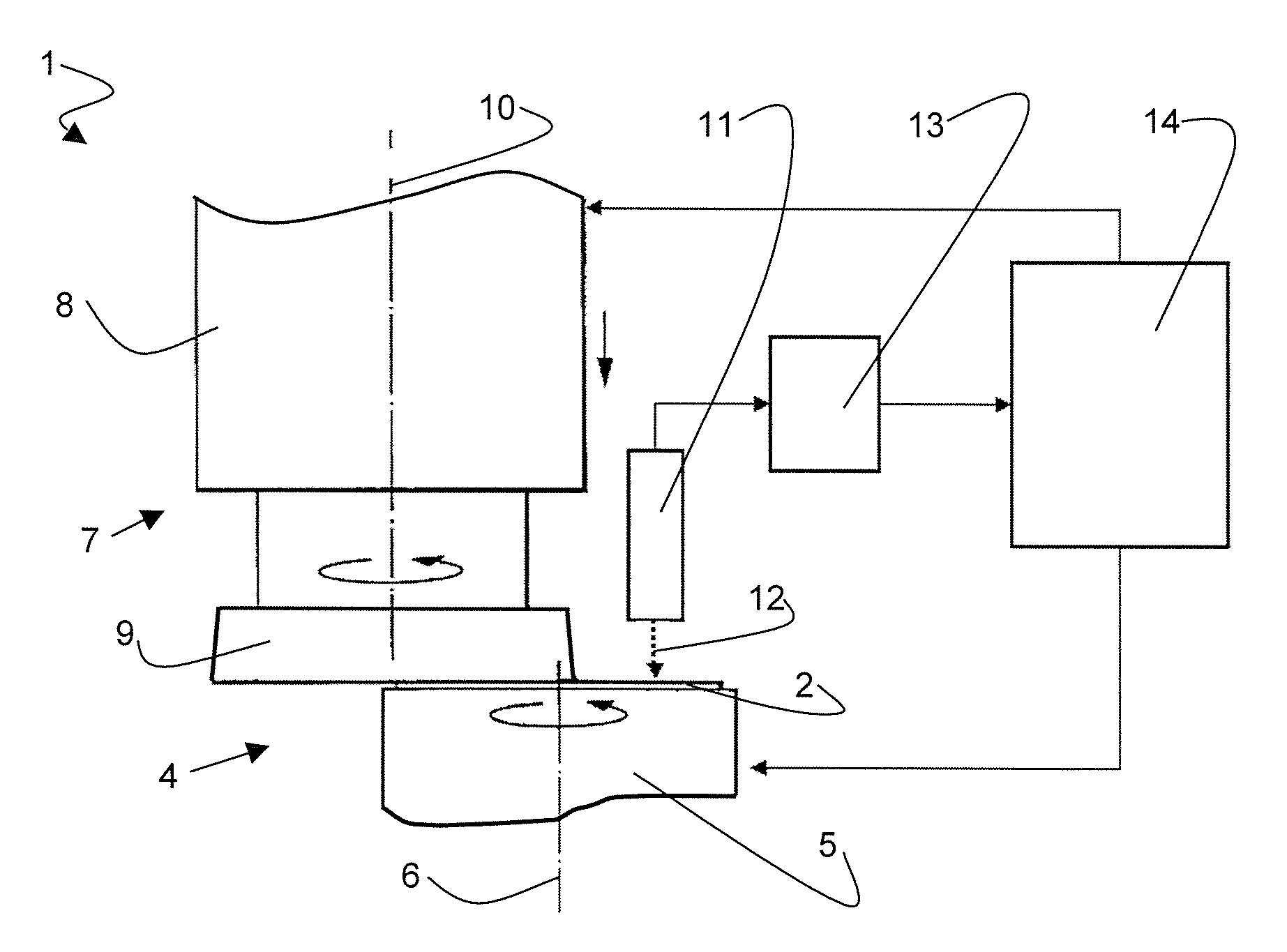Method and apparatus for optically measuring by interferometry the thickness of an object
an optical measurement and interferometer technology, applied in the direction of semiconductor/solid-state device testing/measurement, lapping machines, instruments, etc., can solve the problems of damage to the slice of semiconductor material, inability to measure very thin thicknesses, and limited technology in the dimensions they can measure. , to achieve the effect of convenient and cheap implementation
- Summary
- Abstract
- Description
- Claims
- Application Information
AI Technical Summary
Benefits of technology
Problems solved by technology
Method used
Image
Examples
first embodiment
[0055] the processing unit 13 determines the minimum Tmin and the maximum Tmax of the actual value of the thickness T of the slice 2 of semiconductor material, i.e. it determines the amplitude ΔT of the variation range of the actual value of the thickness T of the slice 2 of semiconductor material as a function of a minimum and a maximum of the rough thickness values RTW belonging to the preponderant group GMAX of thickness classes C. Said minimum and maximum can be estimated, for example, on the basis of processing on the standard deviation in the distribution of such rough thickness values RTW. In other words, the rough thickness value that is estimated to be the lowest among the rough thickness values RTW belonging to the preponderant group GMAX of thickness classes C represents the minimum Tmin of the actual value of the thickness T of the slice 2 of semiconductor material, whereas the rough thickness value that is estimated to be the highest among the rough thickness values RTW...
second embodiment
[0067] measurements of the thickness T of the slice 2 of semiconductor material are carried out in a sequence, and the processing unit 13 updates the lower reject threshold Rmin and the higher reject threshold Rmax used for the current measurement of the thickness T as a function of the actual value of the thickness T determined at the end of the preceding measurement of the thickness T. Preferably, the processing unit 13 determines, according to the above described method, at each measurement of the thickness T of the slice 2 of semiconductor material the amplitude ΔT of the variation range of the actual value of the thickness T of the slice 2 of semiconductor material, too, and sets the lower reject threshold Rmin and the higher reject threshold Rmax, used for the current measurement of the thickness T of the slice 2 of semiconductor material, by subtracting from and adding to, respectively, the actual value of the thickness T determined at the end of the preceding measurement hal...
PUM
| Property | Measurement | Unit |
|---|---|---|
| thicknesses | aaaaa | aaaaa |
| thickness | aaaaa | aaaaa |
| thickness | aaaaa | aaaaa |
Abstract
Description
Claims
Application Information
 Login to View More
Login to View More - R&D
- Intellectual Property
- Life Sciences
- Materials
- Tech Scout
- Unparalleled Data Quality
- Higher Quality Content
- 60% Fewer Hallucinations
Browse by: Latest US Patents, China's latest patents, Technical Efficacy Thesaurus, Application Domain, Technology Topic, Popular Technical Reports.
© 2025 PatSnap. All rights reserved.Legal|Privacy policy|Modern Slavery Act Transparency Statement|Sitemap|About US| Contact US: help@patsnap.com



